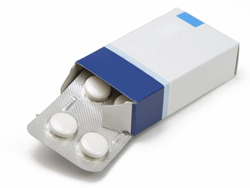Revisiting the safety of non-steroid anti-inflammatory drugs
NSAIDs, such as aspirin and ibuprofen, are a class of drugs with analgaesic and fever-reducing properties. They work by inhibiting the activity of the enzyme cycloogenase I (COX-I), which is implicated in the production of prostaglandins. Administration of NSAIDs has been linked with a 3- to 5-fold increased risk in serious upper gastrointestinal (GI) complications, driving pharmaceutical development towards selective inhibitors of COX-II enzyme that is more tightly linked with inflammation and pain. However, rofecoxib, one of the most widely used COX-II inhibitors, was withdrawn in 2004 due to its association with an increased risk of cardiovascular (CV) events. This has triggered the European Medicines Agency (EMA) to initiate two comprehensive review processes on the side-effects and safety of NSAIDs. The 'Safety of non-steroidal anti-inflammatory drugs' (SOS) project was included in the EU-funded research into the evaluation of the GI and CV effects of traditional NSAIDs and COX-II selective NSAIDs (coxibs). Meta-analysis of a vast array of clinical data and observational studies yielded estimates for GI complications, acute myocardial infarction and stroke, but none for heart failure. Information on dose and duration effects as well as data in children was lacking and several methodological gaps were identified. The SOS healthcare database study allowed a nested case control study in a cohort of 8.5 million new NSAID users, while addressing many of the gaps that had been identified in the literature. All SOS data were communicated to the EMA to allow for regulatory decision making. Collectively, this information was utilised to build a decision model for clinicians when choosing the least GI/CV-toxic NSAID. Furthermore, it is expected to extend warning statements concerning CV, GI and skin toxicity in the traditional NSAID product information, with the aim to minimise drug toxic side-effects.







